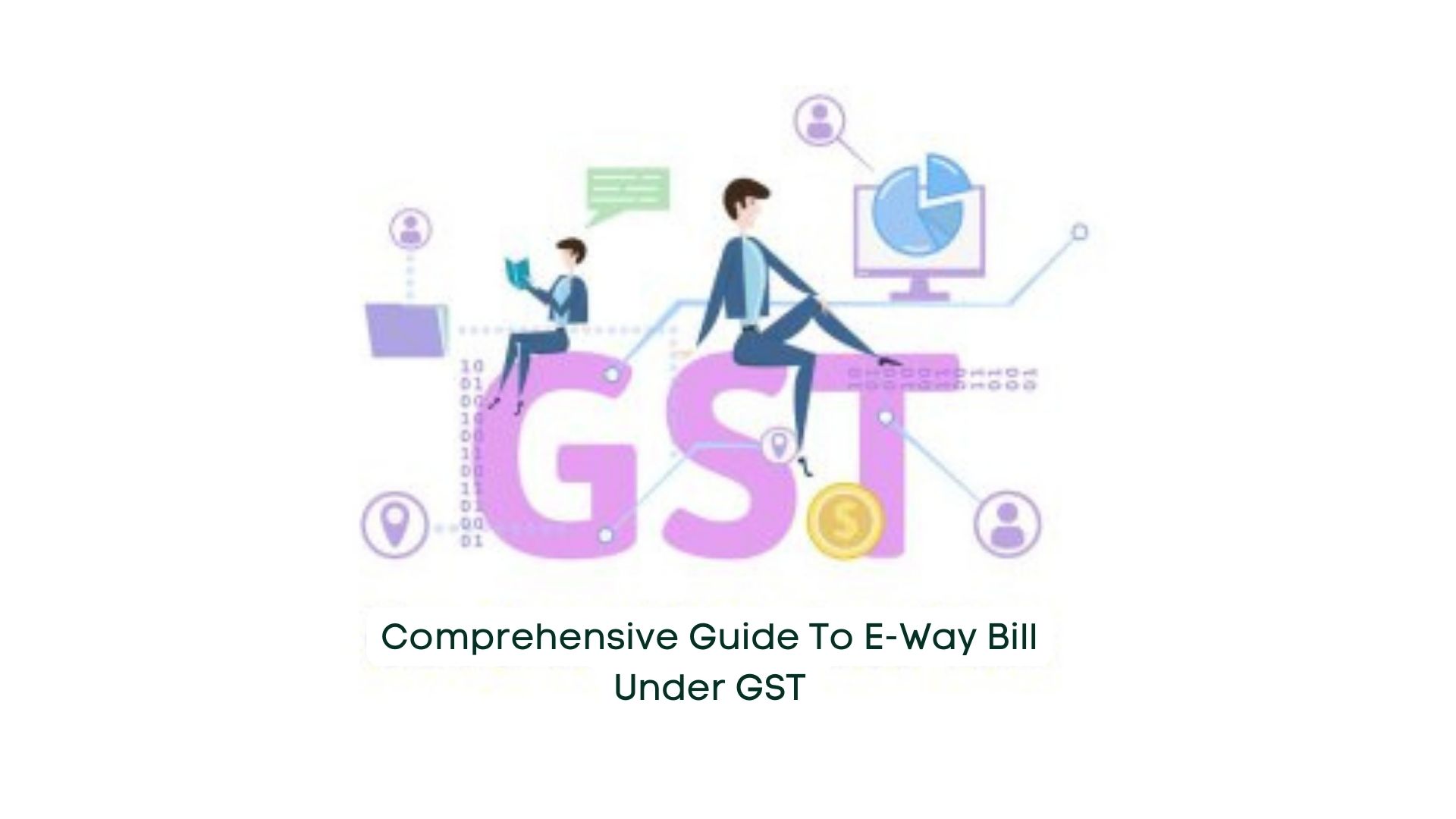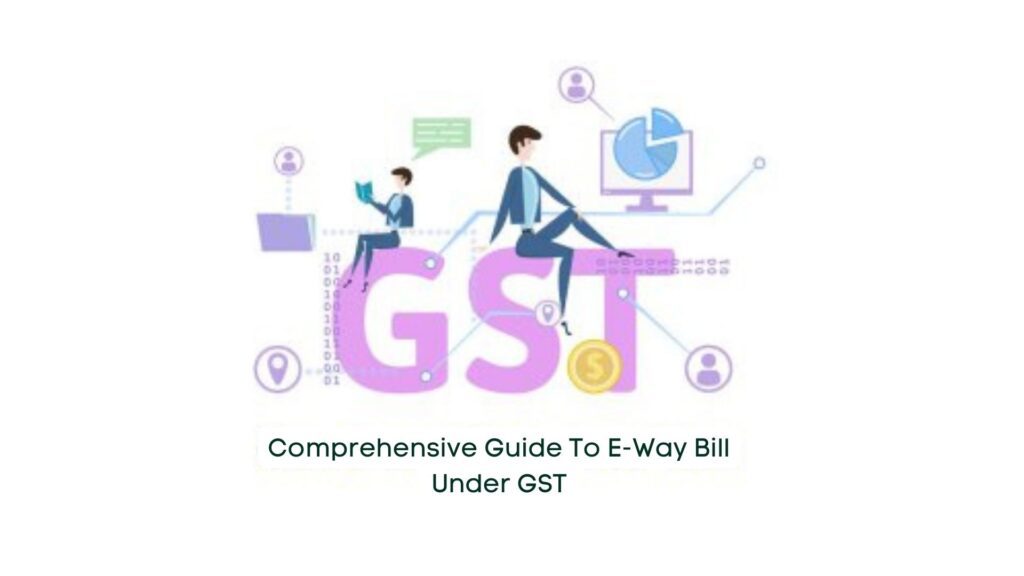
26 Feb Comprehensive Guide to E-Way Bill under GST

The E-way bill under GST, also known as the Electronic Way Bill, was introduced on April 1, 2018. It served as a digital document mandated for goods exceeding the value of Rs. 50,000 during transportation. This bill encompassed essential details such as information about the goods, recipients, consignor, and transporter.
This article explores the intricacies of the e-way bill system under GST, including its procedural aspects, format, and significant dates relevant to e-way bills in India.
Understanding E-Way Bill:
The E-way Bill, a critical electronic document under GST, is carried by the person responsible for transportation, as per Rule 138 and section 68 of the GST Act. It pertains to specific consignments involving the movement of goods valued above Rs. 50,000, as mandated by section 68 of the Goods and Services Tax Act, read with Rule 138. Essentially, it serves as a directive for the shipment, containing details such as the names of consignor and consignee, origin, and destination of the consignment.
This document serves as evidence of goods movement and comprises two parts: Part A, containing recipient’s GSTIN, delivery location, invoice details, value of goods, HSN code, and transport document; and Part B, which includes transporter details. It acts as a compliance mechanism ensuring proper movement of goods, as outlined in Rule 138 of the CGST Rules, 2017, emphasizing the necessity of furnishing all details before commencing the goods movement.
The Purpose and Importance of E-Way Bill under GST:
The primary purpose of the e-way bill under GST is to ensure compliance with GST laws regarding goods transportation in India, serving as an effective tool to track movement and prevent tax evasion. It is generated whenever the value of goods exceeds Rs. 50,000, applicable to both supply-related and non-supply-related movements.
Under Section 68, the person in charge of transportation must carry the e-way bill for consignments surpassing prescribed limits, as stipulated in Rule 138 of CGST Rules, 2017.
Issuance of E-Way Bill under GST:
E-way bills are generated through the common GST portal for goods movement. It’s mandatory to generate an e-way bill for inter-state transportation exceeding Rs. 50,000, or for inter-state movement of handicraft goods by unregistered dealers or individuals.
Generating E-Way Bill:
The procedure for generating e-way bills is detailed in e-way bill rules. Transporters are empowered to generate these bills, either through registration on the GST portal or enrollment if unregistered. The portal facilitates e-way bill generation, cancellation, etc., through web, SMS, or e-invoicing.
Consignors or consignees can also generate e-way bills for transportation via rail, air, or vessels, or if goods are handed over to a transporter for road transportation. In cases where consignors and consignees fail to generate e-way bills for consignments exceeding Rs. 50,000, it becomes the transporter’s responsibility.
Essential Documents and Format:
To generate an e-way bill, applicants must register on the e-way bill portal and provide invoice details along with transporter ID or vehicle number for road transportation, or transporter ID and document number for other modes. The e-way bill format consists of two parts: Part A and Part B, detailing various aspects of the consignment and transporter information, respectively.
Procedure for Generating E-Way Bill:
The process involves logging into the e-way bill system, filling in transaction details, submitting necessary documents, and validating data before obtaining the e-way bill number.
Validity of E-Way Bill:
The validity of e-way bills depends on the total distance covered, with extensions permitted under exceptional circumstances. The relevant date for validity calculation is the date of e-bill generation.
Exceptions to E-Way Bill Requirement:
Several conditions exempt the need for e-way bills, including specified goods transportation, GST-exempted goods, non-motorized conveyance, among others.
In Conclusion:
The phased introduction of the e-way bill system in India aimed to streamline goods movement and enhance tax administration. This digital mechanism fosters transparency, uniformity, and efficiency in compliance, facilitating smoother transportation of goods across the nation.


No Comments